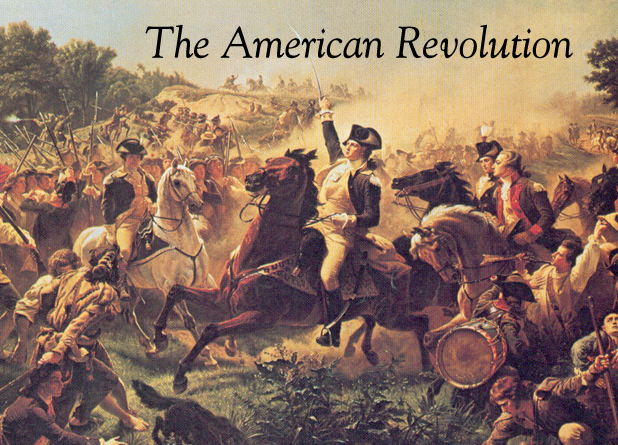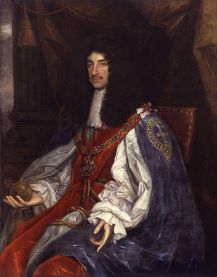A while ago, I started a series called History Lessons With Goldfish. We began our edutainment series with the American Revolution. Alas, there’s so much history in our history that I never made it past the events that led up to the American Revolution, so here we are in part 3, still without much revolution going on.
Before we begin, you might want to refresh your historical knowledge by reading the first two parts or you could just read the recap below:
History Lessons With Goldfish: American Revolution Part 1
History Lessons With Goldfish: American Revolution Part 2
Recap
In the last exciting episodes of History Lessons With Goldfish, we discussed what absolute dicks Kings Charles I and his sons, King Charles II and King James II, were. Diskishry runs in their royal blue blood I suppose. KCI, KCII and KJII stole all the money and all the power for themselves. During their rules, they dissolved parliament, claimed all new world booty for themselves and levied very high taxes on imports from the colonies. The British folk didn’t much appreciate that. More and more of them were moving over to America every year.
|
|
|
|
Then came William & Mary, co-rulers, married couple and first cousins. They put their own government in the colonies, because why not, and passed an act expanding the powers of colonial customs commissioners, including rights of forcible entry, and requiring bonds on certain goods.
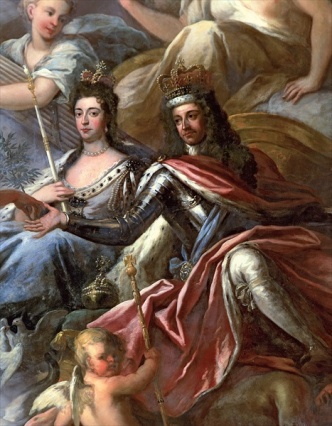
(wikipedia.org)
In addition to warrin’ with Indians whose land they were squatting on, the colonists were getting pretty pissed off about all the taxes and forcible entry and stuff. Being so far away from pomp, circumstance and awful royal footwear made them bolder in their opinions than they probably would have been on the Kings’ front lawn.
And at last, we have reached the revolutionary part of the revolution!
History Lessons With Goldfish: The American Revolution (finally)
So, here we are in 1700 and the American colonies have been around for a while. William & Mary were still king, queen, husband, wife, and first cousins. The Anglo population in the English colonies in America was about a quarter of a million people, with Boston (pop. 7,000) as the largest city, followed by New York (pop. 5,000). It’s an era when there are more Massholes than New Yawkers.
In 1702, the cousins’ reign of terror came to an end and Queen Anne took the talking stick or royal scepter or whatever. Two months later, England declared war on France in order to stop France and Spain from ganging up on England. Anne didn’t waste much time.
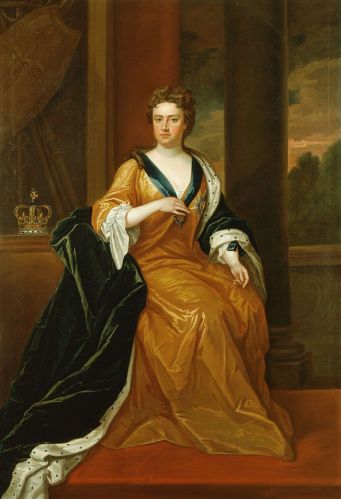
(wikipedia.org)
Anne’s war was called Queen Anne’s War, because what else would it be called? For the next eleven years until 1713, colonists battled the French, their Native American allies, and the Spanish.
In the meantime, there were more massacres and warrin’ on American soil between colonists and Native Americans, because fuck the colonists. I’m rooting for the Native Americans.
Tea was introduced into the colonies for the first time in 1714. Weren’t these English folks in the colonies? How did they survive all the way to 1714 without tea? I can’t survive two days without coffee.
That same year, King George I took the talking stick from Anne. There were 54 people with closer blood ties to Anne, but they were all Catholic, so Protestant George became king.
He didn’t seem to do much regarding the colonies, and during his reign, royal powers actually decreased. “George I: he was king for a while.” Quite the legacy there, George. At least he can say he was the first George and the least shithead one at that.
On George II‘s watch in 1733, the taxin’ gets thick as molasses. Speaking of, The Molasses Act taxed the hell out of–you guessed it–molasses, along with rum and sugar imported from non-British islands in the Caribbean.
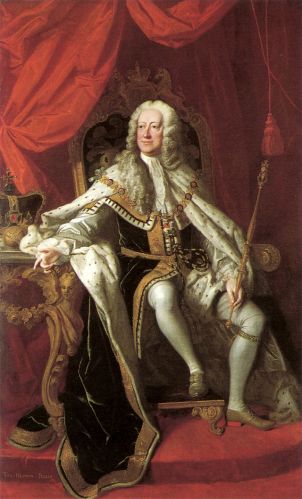
(wikipedia.org)
In 1739, England declared war on Spain, which spilled over into the colonies where Spaniards in Florida got all uppity with Georgia and South Carolina colonists. The same year, three separate slave uprisings happened in South Carolina, because slavery sucks.
The next year, France and Spain ganged up on England, which is exactly what Anne tried to avoid with her war. Instead, she just delayed it. The colonists called this new kerfuffle King George’s War, because they really suck at naming things. George’s war lasted eight years.
In 1754, the French and Indian War started over land in Ohio. Enter George Washington, who was neither French nor Indian. George–Washington, not king–led a small group of American colonists to victory over the French. George and pals built Fort Necessity in the Ohio territory. Woo! Two months later, they surrendered the fort and retreated. Oh.
After two years of fighting, England officially declared war on France, as the squabbles from the French and Indian War spread through Europe like the bubonic plague. They really should have thought about naming it something less limiting than the French and Indian War since there were very few Indians in Europe.
William Pitt, English Secretary of State, established a policy of unlimited warfare, which caused the French/Indian War to ‘splode into a free for all cage match without the cage and with more old-timey weapons. I would love to be in a position to establish a policy like that: Goldfish’s Policy Of Unlimited Warfare. That sounds rad.
In 1760, George III became the new king. Meanwhile, a fire destroyed much of Boston. I’m pretty sure those two sentences are unrelated.
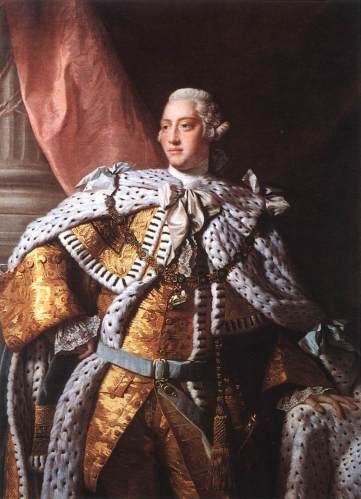
(savagesandscoundrels.org)
Two years later, the limiting nature of The French and Indian War’s name became painfully apparent when England officially declared war on Spain, which was about to throw in with France and Austria. The British successfully whooped some Spanish butt until 1763 when the war ended.
It was known as the Seven Year’s War in Europe. Really, Europe, you’ve got to get better about naming your wars. Anyway, under the treaty that ended it, France gave England all French territory east of the Mississippi River, except New Orleans. The Spanish gave up east and west Florida to the English in return for Cuba. Take that, France and Spain!
With a bigass war under their belt and a lot of new colonial territory, Parliament passed The Sugar Act to make up for all the money they spent asswhoopin’ in the French/Indian/Seven Year War. Asswhoopin’ is expensive, especially when done for seven years.
The Sugar Act increased taxes on–you guessed it–sugar and other things like textiles, coffee, wine and indigo dye. It doubled the taxes on booty shipped to the colonies from England and also forbid the import of rum and French wines. Ruh roh!
The Currency Act of 1764 prohibited the colonists from issuing any paper money, which tanked the colonial economy. Nothing brings the haters like a common enemy, so it united all the colonists.
Then, Parliament passed the Quartering Act and the Stamp Act. The former required colonists to feed and house British troops, while the latter taxed all printed materials including; newspapers, pamphlets, bills, legal documents, licenses, almanacs, dice, playing cards and, well, stamps. The colonists quickly said, “Fuck that,” and united some more in a group hug with guns.
For the first time in 150 years of colonial history, Americans paid taxes, not to local legislatures in America, but directly to England. They didn’t like it much, so a mob attacked the home of Thomas Hutchinson, Chief Justice of Massachusetts. Hutch and his family barely escaped.

(wikipedia.org)
In October, the colonists got together at something called the Stamp Act Congress in New York City with representatives from nine of the colonies. They sent a resolution to George III and Parliament requesting that they take the Stamp Act and all the other the Acts, and shove them up their rotund regal rumps, in the most diplomatic of ways. The phrase “taxation without representation” reared its head.
In 1766, George III signed a bill repealing the Stamp Act after much debate in the English Parliament, including an appearance by Ben Franklin who politely argued that the Acts were total bollocks that should get bent post haste lest there be a revolution. Go, Ben!
However, on the very same day they repealed the Stamp Act, the English Parliament passed the Declaratory Act stating that the British government had total power to legislate any laws governing the American colonies in all cases under any circumstances, because screw the colonists. It would be like a prosecutor offering a plea on manslaughter charges only to turn around and charge the defendant with first degree murder. Way to go, England. This can’t possibly end badly.
The same year, the New York assembly refused to enforce the Quartering Act. Violence broke out in New York between British soldiers and armed colonists, including Sons of Liberty members. In retaliation, England grounded the New York legislature. Go to your room, New York!
Not learning their lesson from all the other Acts, in 1767, greedy bastards passed the Townshend Revenue Acts, imposing new taxes on paper, tea, glass, lead and paints. The Act also set up a colonial board of customs commissioners in Boston.
The next year, Boston and New York merchants agreed to boycott most British goods until the Townshend Acts were repealed. Boston residents were urged to arm themselves at a town meeting. Later in September, English warships sailed into Boston Harbor with two regiments of English infantry.
On March 5, 1770, a mob harassed some British soldiers who fired their old-timey muskets straight into the crowd, killing three people instantly, mortally wounding two others and injuring six. This incident was called the Boston Massacre.
The newly appointed Royal Governor of Massachusetts, Thomas Hutchinson, the dude who barely escaped a previous mob, withdrew British troops out of Boston. The captain of the British soldiers involved in the Boston Massacre, Thomas Preston, was charged with murder along with eight of his men.
We’re now in 1770, the colonial population is 2,210,000, and the American Revolution is starting. And that’s about all we have time for today. Tune in next time for the exciting revolutionary part of The American Revolution!
Continued in Part 4!
In addition to those already linked above, information was severely paraphrased from the following sources:

